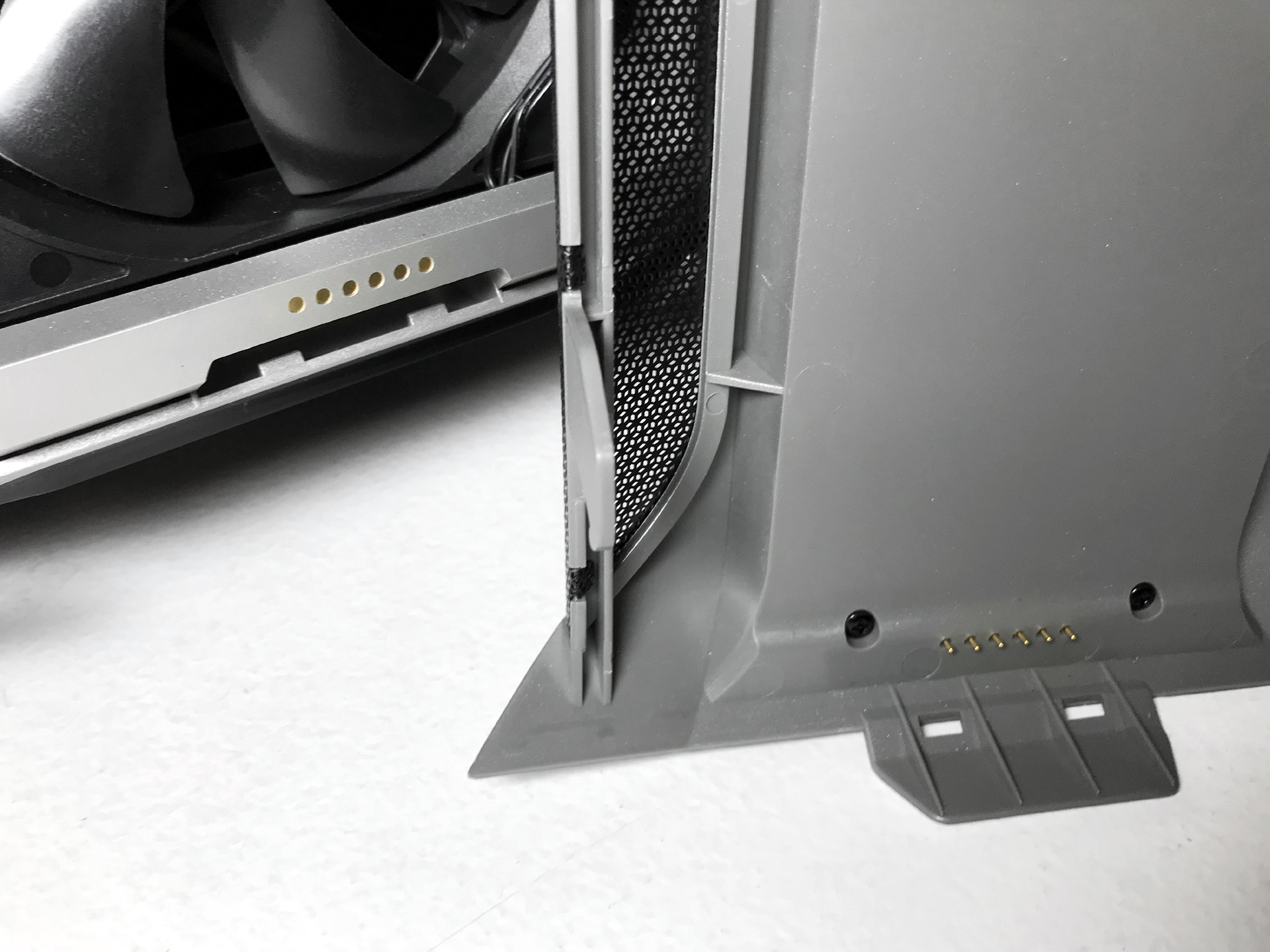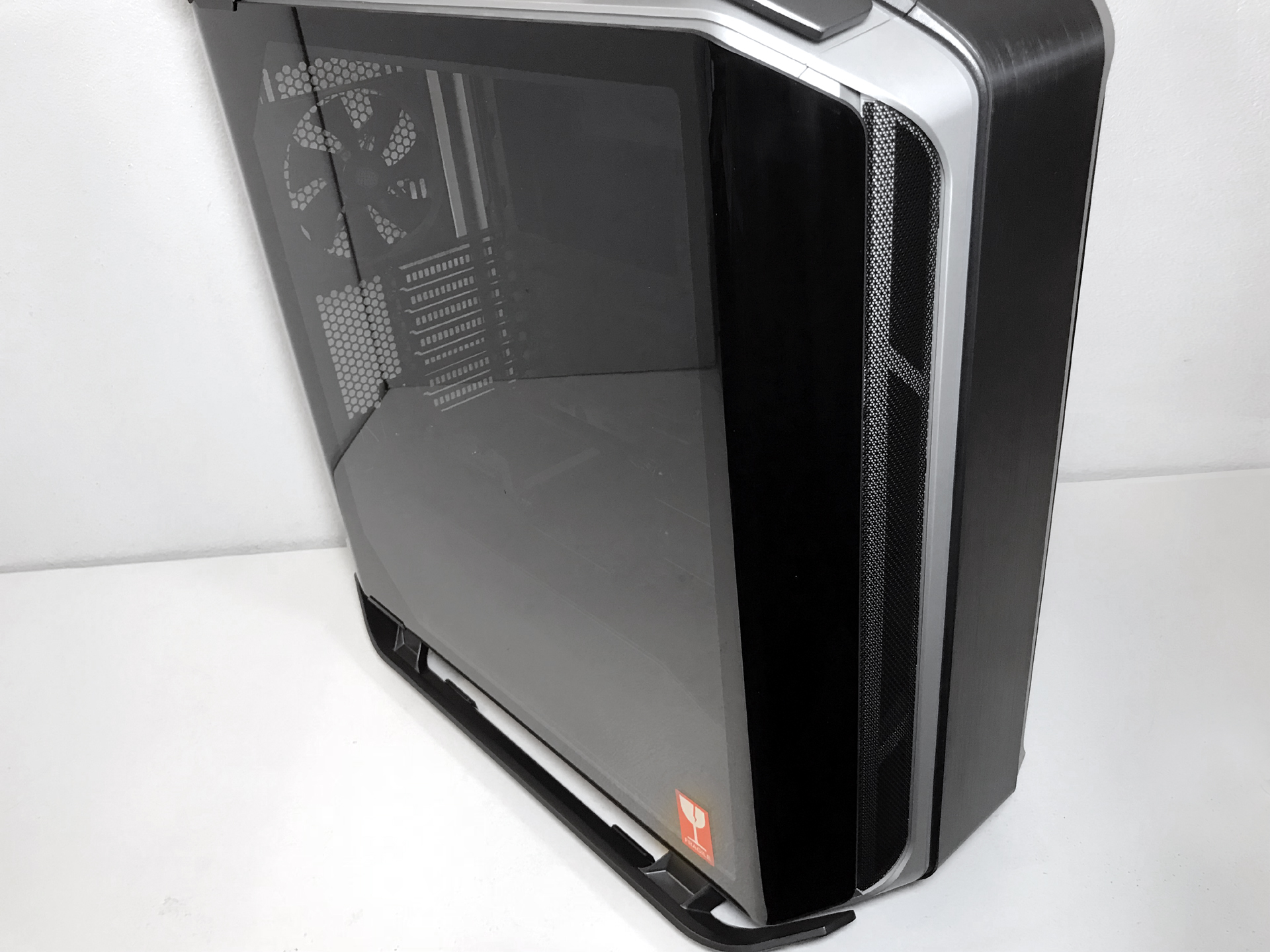Tom's Hardware Verdict
You couldn't ask for a more full-featured, future-proof chassis than the Cooler Master Cosmos C700M. Even with the higher than average price tag, the case's thermal performance, integrated ARGB lighting, multi-layout design and laundry list of features definitely justifies the asking price.
Pros
- +
Excellent thermal performance, liquid cooling support and cable management
- +
Quiet under full load
- +
Expandability
- +
Modular design allows for a variety of configurations
- +
USB-C port
- +
Multiple GPU configurations
- +
Includes GPU riser cable and four 140mm fans
Cons
- -
Price
- -
Heavy
- -
Requires two USB 3.0 headers or a 20-pin splitter cable for all four front panel USB 3.0 ports
- -
Reconfiguring the motherboard layout may be tough for beginners
Why you can trust Tom's Hardware
Features & Specifications
Buyers are too often forced to compromise when choosing a new chassis, but adages such as "you can't have everything" aren't necessarily the case when it comes to the Cooler Master Cosmos C700M. In fact, not only does this chassis have just about everything a person could want in a full tower chassis, it also offers special features that allow the end user to reconfigure the case at a later date for a completely new look. As one might expect, a premium chassis such as this comes at a price. The Cooler Master Cosmos retails for $440.
Specifications
| Type | Full-Tower ATX |
| Motherboard Support | Mini-ITX, Micro-ATX, ATX, (E-ATX support up to 12 x 10.7 inches) |
| Dimensions (HxWxD) | 25.6 x 12.1 x 25.5 inches (651 x 306 x 650mm) |
| Space Above Motherboard | 3 inches (78mm) |
| Card Length | 19.3 inches (490mm) without HDD cage |
| CPU Cooler Height | 7.8 inches (198mm) |
| Power Supply Length | Standard ATX PS2-Style PSU |
| Weight | 52.5lbs (23.8kg) |
| External Bays | 1x 5.25 inches |
| Internal Bays | 5x 3.5 inches4x 2.5 inches (+ 5x converted from 3.5) |
| Card Slots | 8 |
| Ports/Jacks | 1x USB 3.1 Type-C4x USB 3.01x audio/mic jacks |
| Other | ARGB control button, fan speed switch |
| Front Fans | 3x 140mm (up to 3x 120/140mm) |
| Rear Fans | 1x 140mm (up to 1x 140mm or 120mm) |
| Top Fans | ✗ (up to 3x 120/140mm) |
| Bottom Fans | ✗ (up to 2x 120/140mm) |
| Side Fans | ✗ |
| Dampening | ✗ |
| Warranty | Two years, limited |
Exterior
The Cosmos C700M is colossal in every sense of the word. Measuring a massive 651 x 306 x 650mm (HxWxD) and absolutely crushing the scales at over 52lbs (empty), this ARGB-lit chassis will no doubt be the centerpiece of any room it occupies. The frame of the chassis is steel, and the exterior is a mix of plastic, aluminum and tempered glass. To the casual observer, the Cosmos C700M bears a striking resemblance to the Cosmos C700P but, upon closer inspection, you will notice an array of improvements both cosmetic and functional on this new chassis.
Once such feature is the ability to reconfigure the internal components from a standard or inverted layout to a chimney effect that rotates your components 90 degrees and vents heat out the top of the chassis instead of the back. We will talk about that in detail later in this review.


The plastic top panel of the C700M is covered with with a very stylistic brushed aluminum insert. Two sturdy cast aluminum bars run the entire length of the top, allowing you to lift the case from above. Much like Cooler Master's own MasterCase H500M and the older Cosmos C700P mentioned earlier, the slanted area between the top panel and the front panel is home to four USB 3.0 and one USB 3.1 Type-C ports, headphone and microphone jacks, a hard drive activity LED, a fan control switch, an ARGB lighting controller and a reset and power button. Note that if you plan on utilizing all four USB 3.0 ports, you will need a motherboard with dual 3.0 headers or an adapter cable.
The front panel matches the top with its stylish brushed aluminum cover mated to the plastic front panel. Behind the front panel are a plastic mesh filter, a mounting location for a 5.25-inch optical drive or drive bay accessory and three 140mm fans.
Behind the lower portion of the integrated center panel are six metal pins that are mated to six corresponding contact points in the frame of the chassis. This system allows the embedded ARGB lighting to work with the rest of the system without the need for wires.
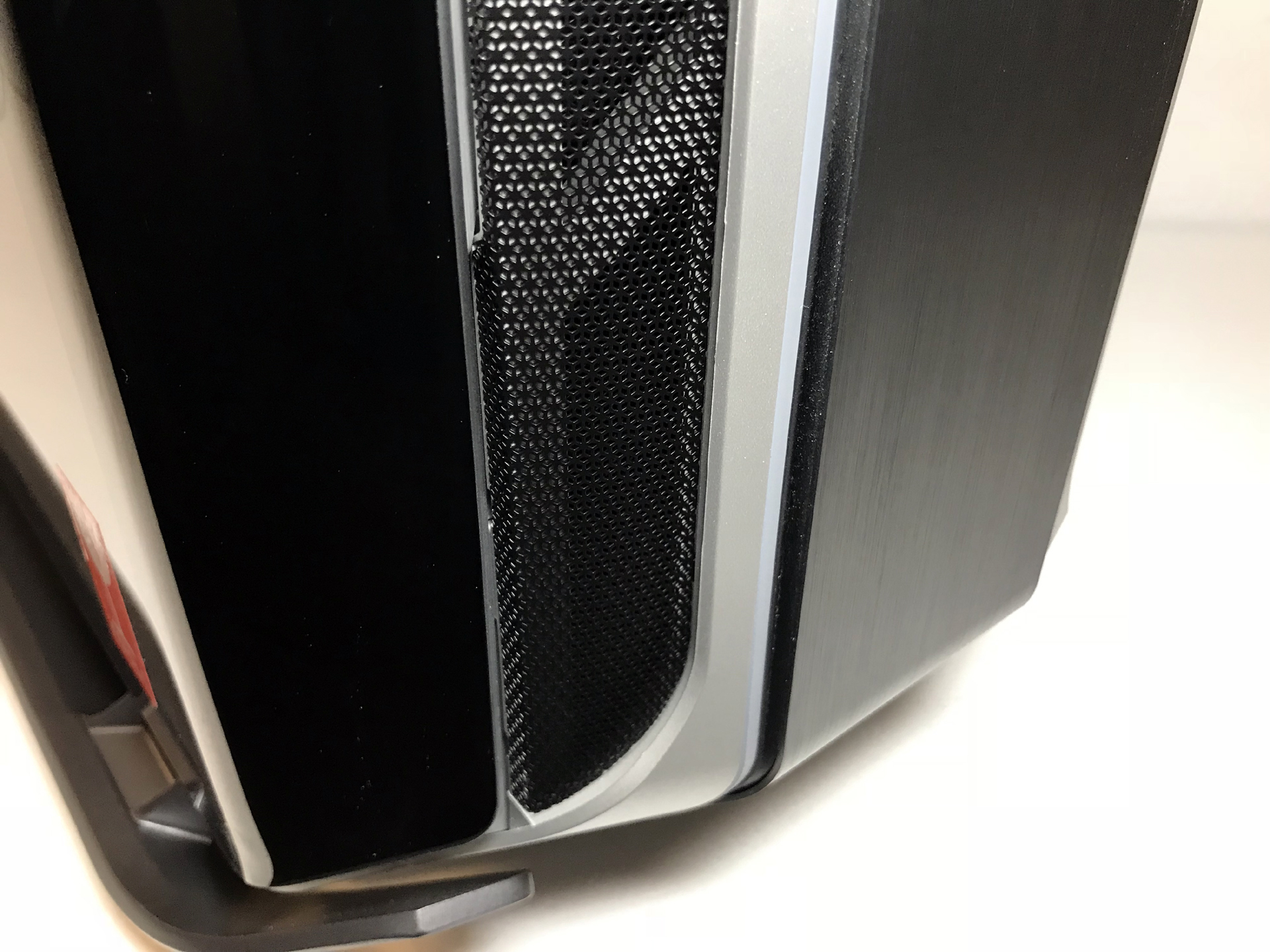

Ventilation slots run from top to bottom along both sides of the front panel with dual-layer black metal mesh (a coarse perforated metal backed by fine metal screening material) built into the panel itself.
Get Tom's Hardware's best news and in-depth reviews, straight to your inbox.
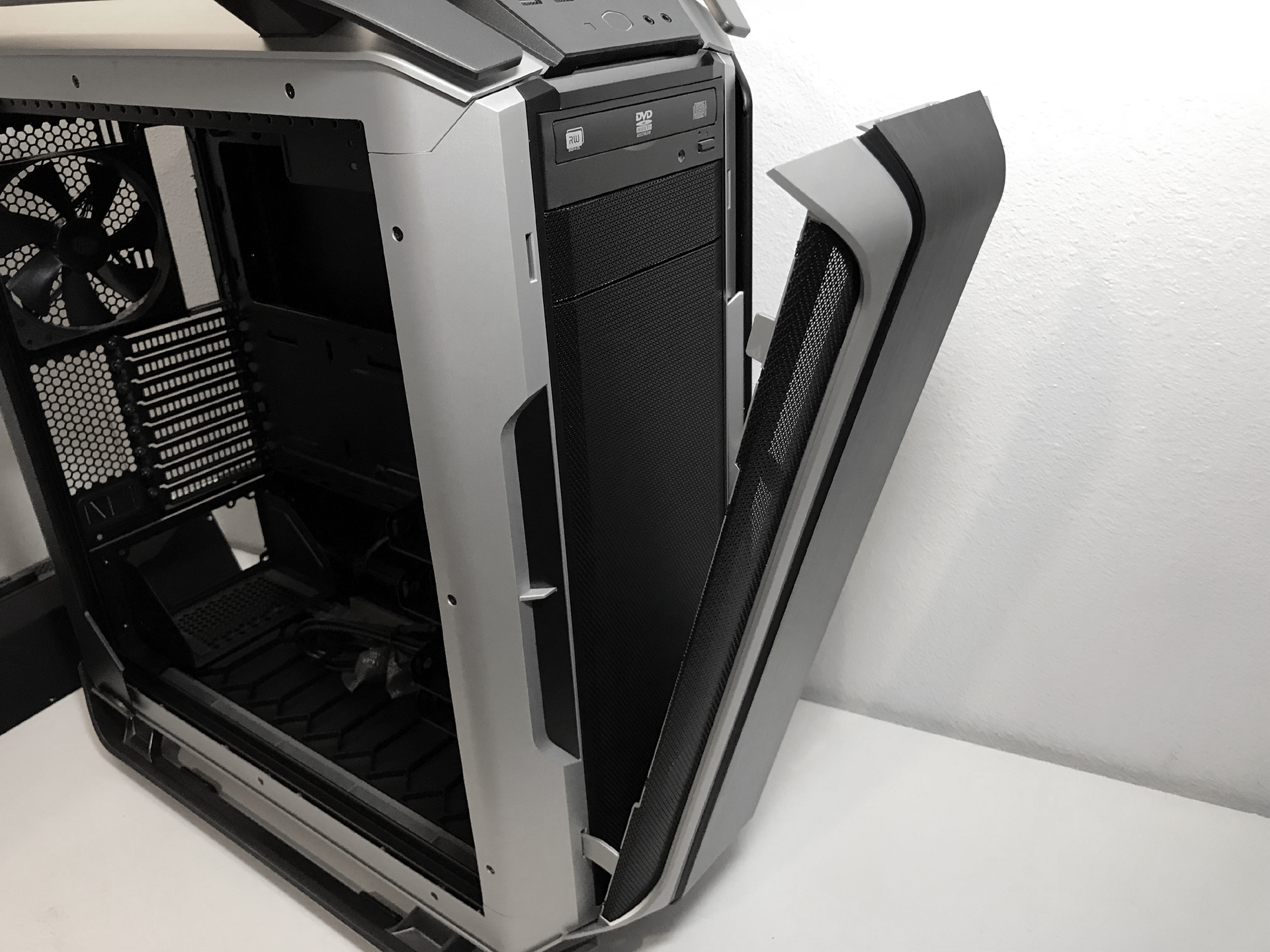

The center portion of the front panel features a slotted hinge at the base that allows the panel to tilt outwards to allow access to the optical drive slot without having to fully remove the front panel.
The lightly tinted full-coverage tempered glass side panel was created using state-of-the-art technology to add the curved shape. The tempered glass panel, as well as the steel panel on the opposite side, are hinged in the rear.
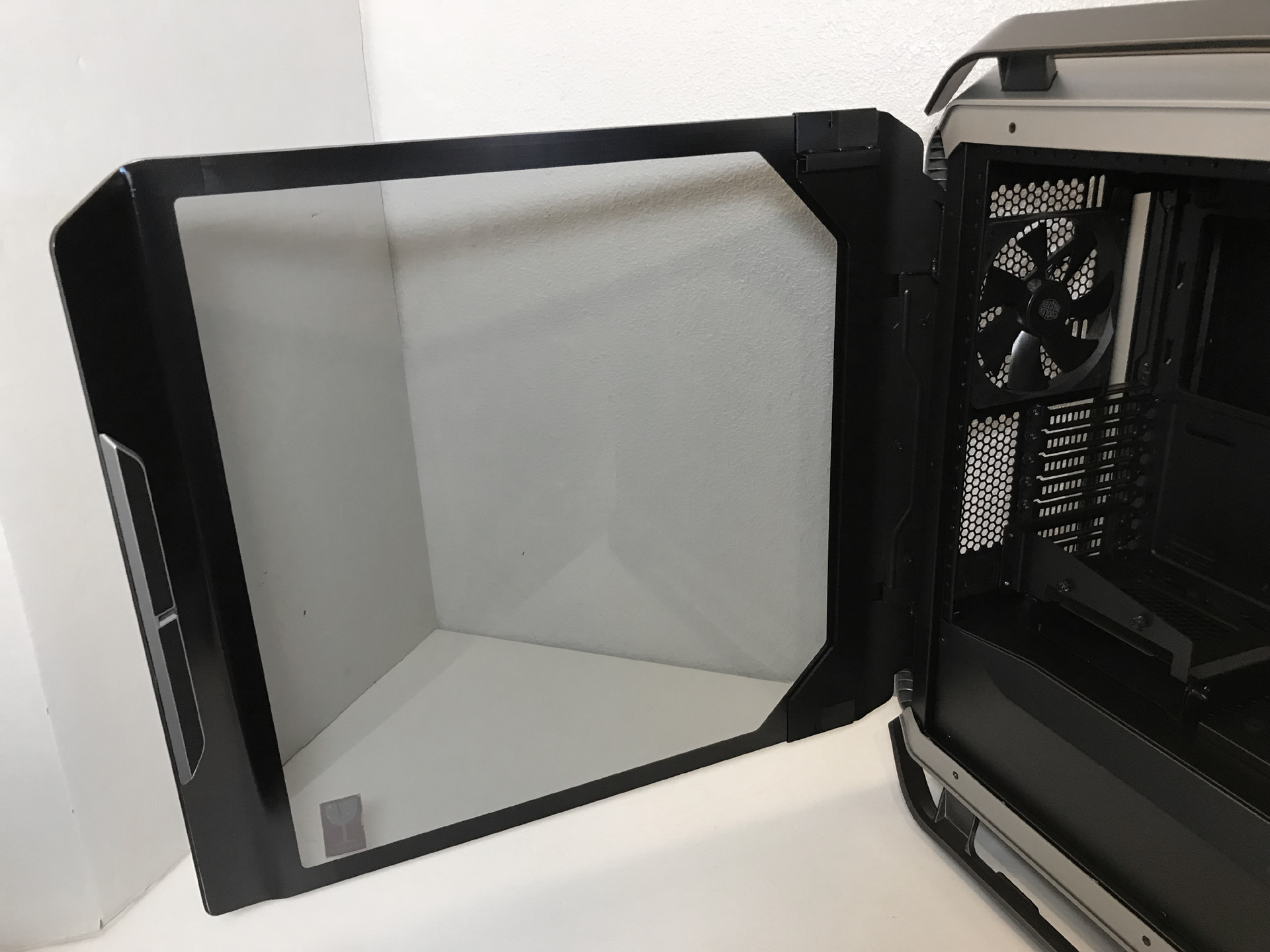
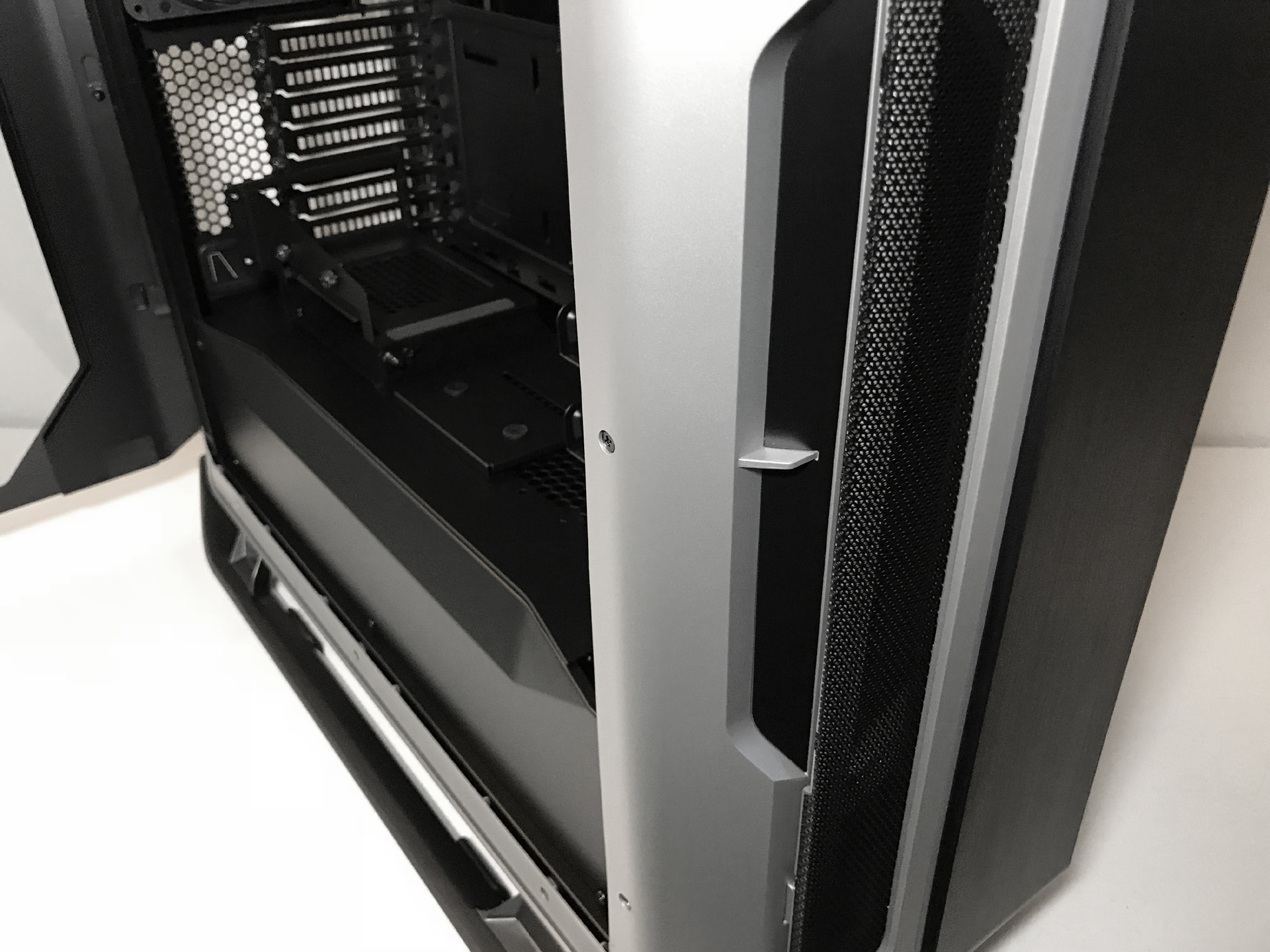

Both panels are interchangeable and can easily be removed by lifting the panels off the steel spring-loaded brackets. This is very handy when working on your system or installing components. Powerful magnets located in the leading edge keep both panels securely in place when closed.
In its default configuration, the rear of the chassis features eight standard expansion card slots, plus an opening to route cables for vertically mounted video cards, an opening for a bottom-mounted PSU and an exhaust-fan mounting location that supports both 120mm and 140mm fans. The exhaust-fan mounting location is equipped with slotted screw holes that allow you to adjust the position of the fan to fine-tune airflow or make room for system components.
There is also a removable plastic frame on the rear held in place by magnets. It should be noted that although the magnets do a great job holding the rear panel in place, the panel will pop off fairly easily if you attempt to use it as a handhold when lifting or moving the chassis.
A large plastic mesh filter that covers the entire bottom of the chassis is removable from the front. Two large flat cast aluminum bars (that match the top of the chassis) with rubber pads keep the case almost an inch off the ground.



In addition to the dual-layer black mesh lining, the openings in the front panel and large removable plastic mesh filters that cover the length of the case's front and bottom, the entire top panel is filtered. Both the front and bottom filters are removable from the front, so there is no need to move this massive chassis for maintenance and cleaning.
MORE: Best Cases
MORE: All Case Content
Steven Lynch is a contributor for Tom’s Hardware, primarily covering case reviews and news.
-
SockPuppet I'm still rocking the OG Cosmos case. Very few items in the PC world actually last as long as you think they will. I'm proud to report this case is one of them.Reply -
modusoperandi00 Had me at "bottom filter removable from the front". Lost me at "$440 and big as a house".Reply -
cryoburner ReplyYou couldn't ask for a more full-featured, future-proof chassis than the Cooler Master Cosmos C700M.
Future-proof, unless you decide in the future that you don't want your PC to be similar in size and weight to a mini fridge. : P
It's nice to see an external drive bay included, though the means of accessing it behind the front panel looks a bit janky. I would rather see a small portion of the panel flip open rather than the entire thing, and perhaps have it so that the bay portion could optionally be exposed at all times. That front panel also seems to contain more plastic than I would like to see in a $400+ case, particularly for a part of the case that might get interacted with on a regular basis. -
mlee 2500 hmmm. While it has some additional features it's difficult to reconcile the cost versus a Define R6, NZT, or BeQuiet! chassis costing 1/3rd as much.Reply
Also I think it's hideous looking, but beauty is in the eye of the beholder and in this case I suspect the stylistic appeal is geared toward younger enthusiasts who want their box to scream "I play games!". -
janneman666 @SOCKPUPPETReply
Same here. Been "rocking" the Cosmos for almost 7 years, but this is probably it's last week. It's dusty in every orifice (and it has loads of those), dirty and scratched, and I'm not happy with the front port layout anymore. It's time to move on.
I've been thinking about getting the Cosmos II. It's also a fantastic looking monster of a case, but like with the original Cosmos, it's age is showing in it's front panel. So I'm just going to take the leap, and go for the C700M. I like the look, love the features and layout. The glass panel combined with a nice layout (with lights!!!) will make it look like it's already 2019.
Going to order it in one hour. I'm both happy and sad... -
jbeck25691 hi I own this case as of yesterday got everything installed in it but have one problem I don't know how to set up the rbg for the strips on outside of case and underneath I see theres 2 3 pin connectors when I connect them only part of the rbg is coming on any help plz someoneReply -
Deadtroopers Reply
Check you have connected the controller correctly (p24 of Manual).jbeck25691 said:hi I own this case as of yesterday got everything installed in it but have one problem I don't know how to set up the rbg for the strips on outside of case and underneath I see theres 2 3 pin connectors when I connect them only part of the rbg is coming on any help plz someone -
marnes This is an amazing case and I bought it several months ago. I like that it's huge, I like the aesthetics of it -- it literally looks like it came out of a Tron movie. Very high quality parts, and incredibly modular. In this situation, I got what I paid for, even from a build quality only perspective.Reply
The reason I like big full sized cases is a valid one. I generally don't move my computer, and I like having options for installing things. It is definitely big and heavy, but the aluminum handles allow for easy pickup.
Rewind to 1997 -- I built my first water-cooled case. Got the distilled water, put in the powder, overclocked my Celeron significantly and all was fine. 1-2 years later, my computer started overheating. The pump was fine, but upon closer inspection discovered the entire circuit had algae growth in it. Then I meticulously disassembled it, and attempted to clean it. There was no cleaning that out. It was done. So I decided I'd never do that again.
But as a result, I found that sizeable aluminum cases act as great passive cooling, so the inside of your computer can dissipate far better than a smaller case. Get some quality fans, and you end up with a quiet rig. In the early 2000s I bought a nice all aluminum silverstone case, and that lasted me until I bought this one. The case predated 2.5" drives, didn't have the fancy rubber vibration dampening, and had headers for USB1.0 probably. I had additional problems where my Intel 4790K with a nice big coolermaster heatsink on it, was too big for the pull out tray, so I had to install it the old fashioned way.



